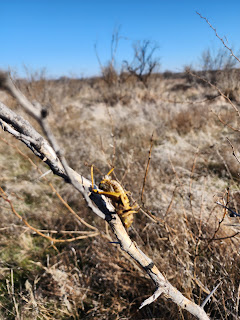 |
| Purple Martin house at Wild Bird Rescue |
Spring is just around the corner, so it's time to get outside. Spring migration is just getting started, and right now at least, the weather is moderating, so it is a good time to check out the birds.
A lot of bird activities are scheduled over the next few weeks, and some other bird-related activities are going on, and I will post about those, but let's start with the arrival of purple martins.
Purple Martins will be coming into town soon. We usually have scouts arriving in early February. The Purple Martin Conservation Association keeps a record of scout reports each year, and a number of reports have already been made. In fact, there is a report already posted on January 16 in North Richland Hills. What does that mean for you? If you have purple martin houses, get them cleaned out and ready. The hard part is keeping out house sparrows and starlings until the purple martins start moving in. You might plug the entrances until you see a scout and then unblock the opening.
I love the robotic sounds of these birds in the summer. Enjoy!
Good birding!

.jpg)
.jpg)



_-_M%C3%A9rida,_Yucat%C3%A1n.jpg)
